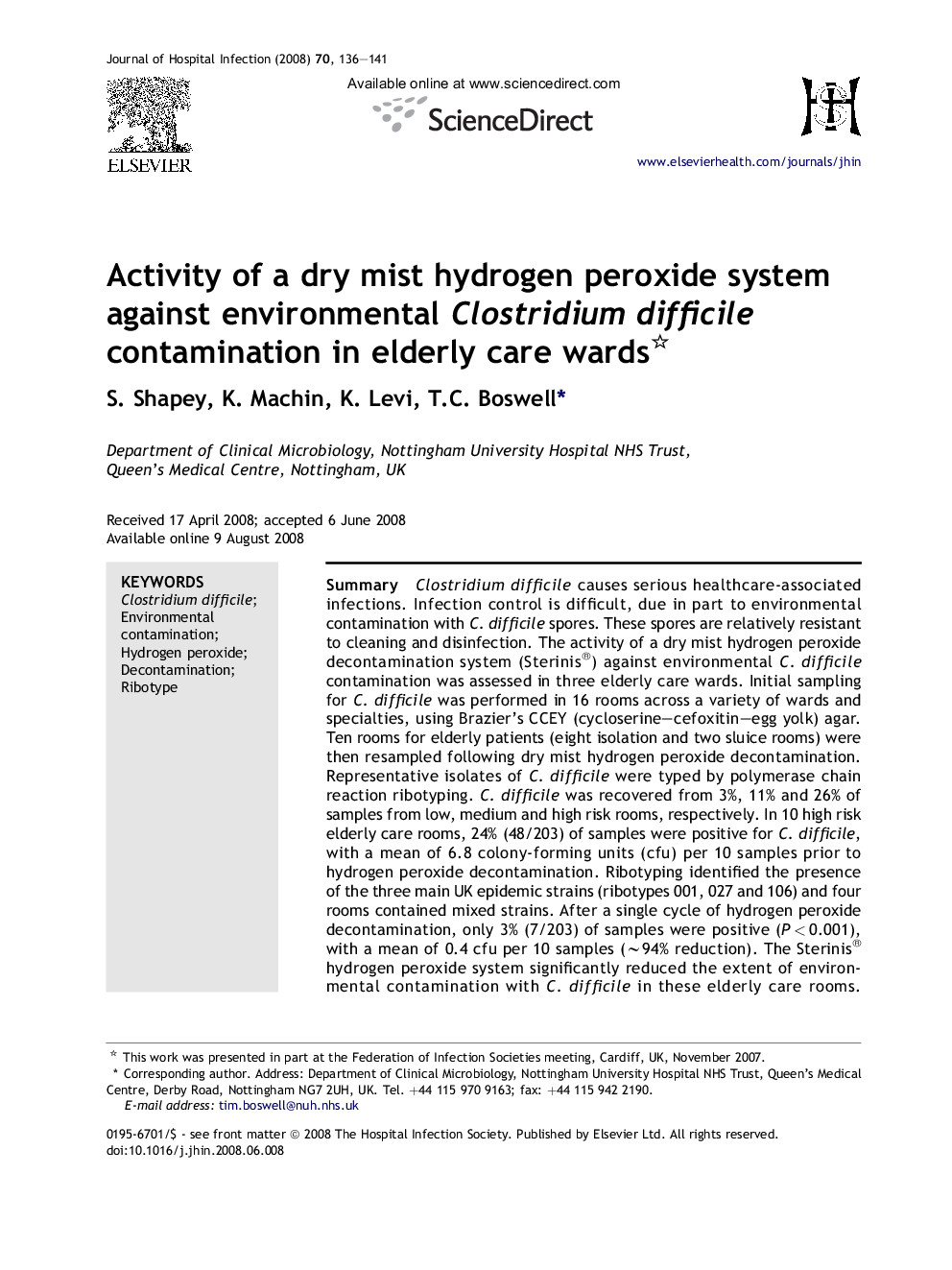| Article ID | Journal | Published Year | Pages | File Type |
|---|---|---|---|---|
| 3373232 | Journal of Hospital Infection | 2008 | 6 Pages |
SummaryClostridium difficile causes serious healthcare-associated infections. Infection control is difficult, due in part to environmental contamination with C. difficile spores. These spores are relatively resistant to cleaning and disinfection. The activity of a dry mist hydrogen peroxide decontamination system (Sterinis®) against environmental C. difficile contamination was assessed in three elderly care wards. Initial sampling for C. difficile was performed in 16 rooms across a variety of wards and specialties, using Brazier's CCEY (cycloserine–cefoxitin–egg yolk) agar. Ten rooms for elderly patients (eight isolation and two sluice rooms) were then resampled following dry mist hydrogen peroxide decontamination. Representative isolates of C. difficile were typed by polymerase chain reaction ribotyping. C. difficile was recovered from 3%, 11% and 26% of samples from low, medium and high risk rooms, respectively. In 10 high risk elderly care rooms, 24% (48/203) of samples were positive for C. difficile, with a mean of 6.8 colony-forming units (cfu) per 10 samples prior to hydrogen peroxide decontamination. Ribotyping identified the presence of the three main UK epidemic strains (ribotypes 001, 027 and 106) and four rooms contained mixed strains. After a single cycle of hydrogen peroxide decontamination, only 3% (7/203) of samples were positive (P < 0.001), with a mean of 0.4 cfu per 10 samples (∼94% reduction). The Sterinis® hydrogen peroxide system significantly reduced the extent of environmental contamination with C. difficile in these elderly care rooms. This relatively quick and user-friendly technology might be a more reliable method of terminally disinfecting isolation rooms, following detergent cleaning, compared to the manual application of other disinfectants.
